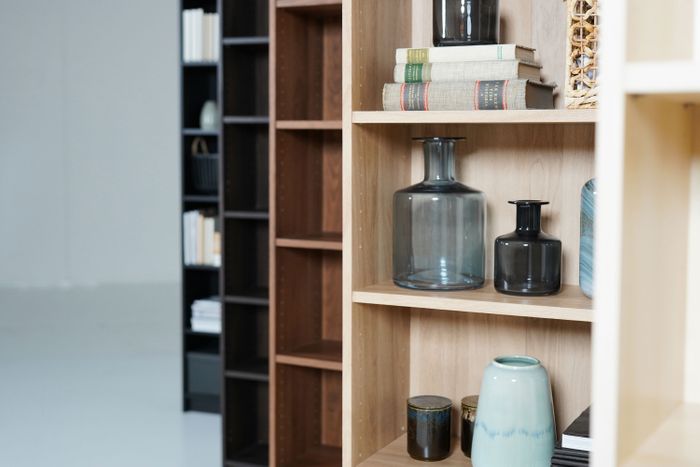
Ikea makes a Billy bookcase every three seconds and sells one every five — something the company has been proudly broadcasting for years. Apparently, that’s not fast enough. As the Swedish retailer of flat-pack sofas and frozen meatballs told The Wall Street Journal, supply-chain bottlenecks and inflation are so dire that Ikea has redesigned its products to keep prices low while maintaining its profit margin. It’s now using “paper foil” (thick contact paper that’s faster to apply) instead of wood veneer on the Billy bookcase, aluminum instead of zinc (which doubled in price after Russia invaded Ukraine last year) in its bathroom hooks, and plastic instead of wood in its cabinet doors and drawers. The way Ikea is constructing furniture is changing too. The Rönninge dining table, which sells for $500 and came out last year, has reinforced, hollow veneer legs instead of solid wooden ones, sparing the company the costs of dealing with an unpredictable lumber supply and market. And Ikea has figured out how to streamline the silhouette of best sellers like its Flintan office chair to make it easier to ship in a flat pack and get more into each shipping container.
As Ikea lightens and slims down furniture, it seems any expectations of longevity (which were already pretty low) can only shrink too. An Ikea spokesperson says that the paper foil — printed and embossed to look like wood — is “similar to” the veneer that came before it and that it ages “in a more uniform way.” However, accidentally leaving an iced coffee on one of the veneered pieces already guaranteed warped, blistery patches that look like STI symptoms. The foil doesn’t seem like it will help with the company’s notoriously saggy shelves either. Switching to aluminum, a softer metal than zinc, might make for less-durable products. I admit that I own Kallax shelves, and last time I changed apartments, my movers said that Ikea stuff always becomes fatally wobbly after a couple relocations. (I’m on three with mine, and I feel like I’m cheating death!) When Ikea’s changes reach the U.S. market in 2024, Billy buyers will essentially be getting sawdust, glue, and paper. But at least it costs less than $100! Which is the logic Ikea is counting on.
The Billy bookcase is actually less expensive now than it was when it was introduced in 1978. That downward trend isn’t just because customers are trying to save money. It expands the market for more cheap stuff. “Get the prices down and you increase sales — we created that demand, not the consumer,” a former Ikea environmental director told The Guardian in 2020. After all, the quintessential Ikea shopping experience involves filling your cart with a bunch of $5 to $30 items you didn’t need in the first place. But buying more cheap stuff means having to replace things often — a hamster wheel of furniture buying that could end up costing the customer a lot of money in the long run. It’s a formula that’s working but probably not as effectively as Ikea would like: Last year, the company had record sales, but its annual profit was cut in half to $788 million.
Sadly, this all points to a worsening waste problem. Every year, Americans send 12 million tons of furniture to landfills — much of it from companies like Ikea and Wayfair, which make things with short life spans. Then there’s the matter of all the raw materials needed to make the furniture in the first place. In the past, Ikea said it was addressing environmental concerns by starting a furniture buyback program to keep things out of the dump, using recycled materials, and designing products that can be repaired or repurposed. But what good are these measures if Ikea’s newly redesigned furniture deteriorates even faster? All those paper-covered Billy bookcases flying off the assembly lines will only pile up more quickly in our landfills.




